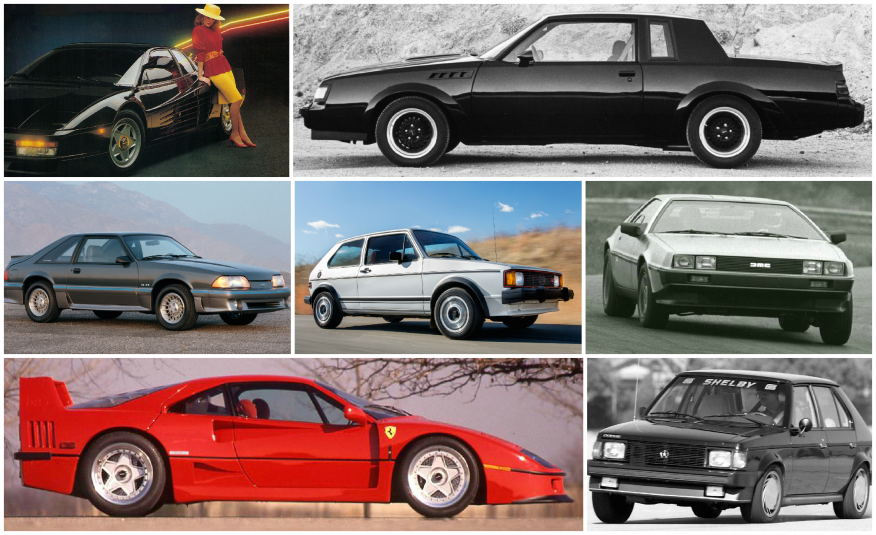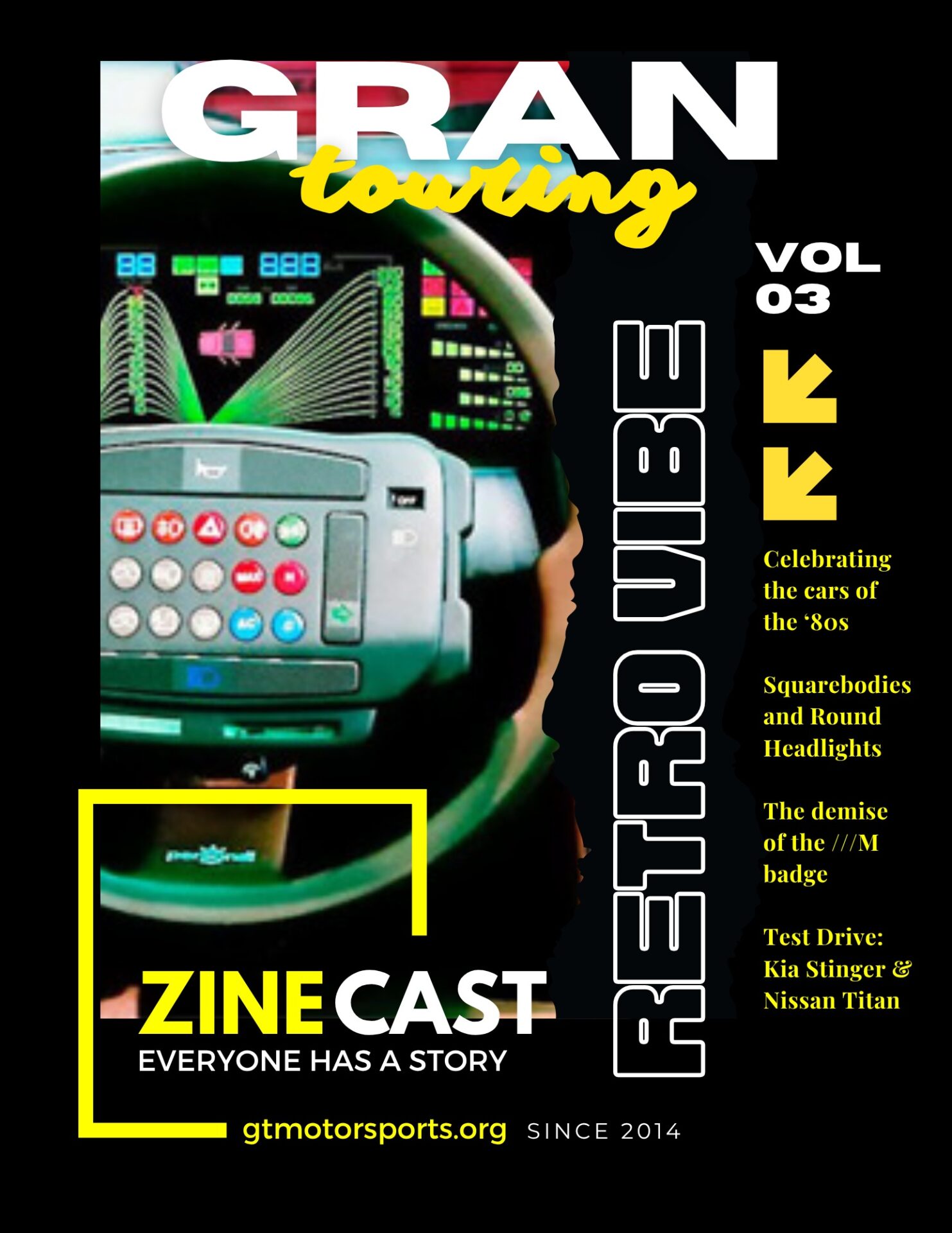Matt Y: Picking up where last weeks ‘80s retrospective article left off … while it’s a great look back at the ‘80s cars, I don’t think we gave the American’s their fair share. I’m not nearly as well versed on the Italian cars as some – I know the German junk and some of the Japanese stuff because that was what I grew up driving / racing against, and I happened to own one of those german-built Ford Capris (‘76 Capri II Ghia with the 2.8 V6).
Tune in everywhere you stream, download or listen!
By current standards, cars of the ‘80s are terrible BUT compared to their predecessors, these cars were a tremendous step forward. The oil crisis of the mid-’70s started a significant change in focus for auto manufacturers, even the American “Big Three” (GM, Ford and Chrysler). Gone was the continual development of 1950s technology – body-on-frame, RWD, gigantic but gutless V8s, replaced by lighter unibody vehicles with FWD and smaller but more powerful V6 and 4-cylinders engines.

From General Motors, the lovely A-Body (Celebrity, Century, Cutlass, 6000) and the X-platform (Citation, Skylark, Omega, Phoenix) started to eclipse venerable “full sized” models. As mundane as it may be, Ford introduced the all-new Taurus, a FWD sedan that ultimately replaced the entire full and mid-sized Ford product line. Not to be out done (and to save themselves from bankruptcy), Chrysler introduced the K-Car and it’s variants that ran from basic (Reliant to LeBaron to minivan).
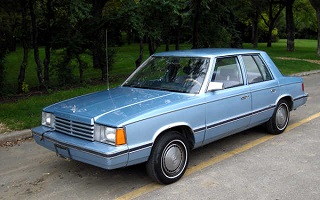
Even the imported cars were improved from the ‘70s. Volkswagen started the trend of bringing virtually the same vehicle as sold in Europe to the American shores – previously and throughout the ‘80s, many of the “imports” were American-market only for fear that Americans wouldn’t purchase small cars with tiny 4-cylinder engines. In other cases, the cars were branded under American nameplates again to reduce the “import factor.” Notable are cars like the Chrysler Conquest T—S—I aka the Mitsubishi Starion or anything called a Geo *cough* Suzuki.
As an aside, I was actually looking for cars when the Toyota AE86 was still available in RWD – I can’t remember if I drove one or not. This was during the time of the “Additional Dealer Markup” and Toyota dealers couldn’t be bothered by some 20-year old kid whose parents were buying him a car. I had also attempted to drive the brand-new Acura Integra but was told to bring my parents – funny, my parents didn’t care what I bought so long as it was in a dollar range AND I liked it. My quest included the Mustang GT because I was in school in North Carolina where the Pony Car was king – that and my friend’s GF had a new GT but in an auto-tragic. And, I rather liked the LOOK of the Fiat 131 – my friend’s parents had a sedan and I remember it being a nice looking car but I don’t ever remember riding in it. His parents’ other car was a full-sized Buick station wagon though.
The big eye opener for the American market was first that these imports were TINY – the Plymouth Champ is smaller than the current MINI (aka “the Maxi” in some circles). With the available turbo, the Champ/Colt was surprisingly quick and nimble compared to anything “built in America.” I vividly remember driving a ‘74 Grand Am with a fire-breathing 400CID and getting absolutely waxed by a Colt Turbo from a red light – the Grand Am’s owner was devastated by the loss which was perhaps one of the best examples of America’s finest being a bit tarnished.

Even the best of the ‘80s are quite crude compared to even today’s cheapest economy cars. However the cars were light and overboosted, power assists hadn’t been introduced – that would have to wait until the mid-’90s. Unlike today’s cars, the ‘80s cars took to modifications with great aplomb, mainly because in stock trim, the ‘80s cars were soft and floppy.
For anyone considering an ‘80s car as a toy – first remember the the old adage of “Don’t Drive Your Heros” which pertains rather vividly to these cars. That said, many of the cars from the ‘80s are “worn” rather than “driven”. Case in point would be the ‘79 VW Scirocco that was so tiny that I had to practice erotic contortionism to enter/exit the car BUT when driving it, the car felt like an extension of my body. Compared to the gigantic, heavy modern cars, these cars of the ‘80s were infinitely tossable and fun combined with simple engine management systems. The downside to the simple engine management was and is that they’re not nearly as tuneable as modern systems.
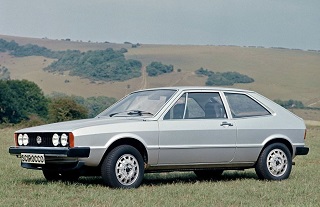
I ultimately ended up with an GTI because the dealer treated me like an adult. I liked the German styling and the features that the Japanese cars didn’t offer. Add to that it was one of the first cars with aerodynamic headlights and that became the big winner.
> turntable screech <
Brad N: Hold up!, so far my co-author Matt Y paints a grim picture of ‘80s in America – the citation? the chevette? the aires? the champ? UGH! YOU HAVE TO BE KIDDING ME. Are you going to sit there and tell me that there aren’t ANY good “square body” cars from the US in the 80s?
Um… I think the Camaro IROC-Z, Firebird Trans-Am, Monte Carlo, Grand National, GNX, and Ford Thunderbird (because NASCAR BRAH!) would like to have a word with you.
> with roberts rules of order, in play <
Matt Y: Those American cars specifically noted were certainly a step above the mundane but even compared to European offerings, these cars were horrible.
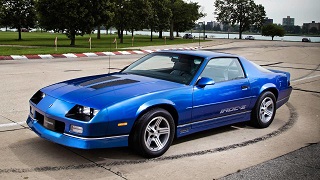
Camaro IROC-Z (or Z28) and Firebird Trans Am – The cheap plastic dash on these cars screams “budget” – the earliest 82 Camaros had a strange 2-arrow speedometer that showed MPH on one arrow and KPH on the other. This was on-par with the ’83 Porsche 944 that had the “backwards” tachometer. Back to the Camaro/Firebird – the interior as a whole was cheap – like as in: Chevy Vega cheap – the plastics were on the verge of falling apart even when the cars were new. The passenger seat was HOT and offered no leg room – why? Because the catalytic converter needed a home … therfore, directly under the passenger’s legs was the “perfect” solution. Add to that a pair of leaky t-tops and virtually NO STORAGE SPACE (especially with the t-tops stored in their slots at the rear of the car). Power came from a very anemic 5.0 (302) or 5.7 (350) V8. The 5.0 produced approximately 150hp! FWIW, my anemic, uber-slow 4.0L Land Rover with it’s Buick-based drivetrain produces 150hp!
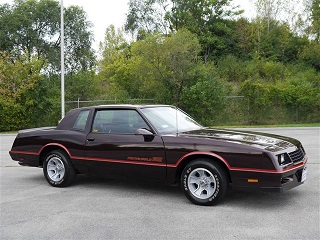
The Monte Carlo SS was perhaps one of the BEST marketed cars on the planet along with the Ford Thunderbird. Both cars were “racing” in NASCAR but the NASCAR versions were nothing like the production models. The V8 that was available in the Monte Carlo SS was the same anemic 5.0 as the Camaro BUT in a heavier, softer chassis with brakes that could stop the Queen Mary (in a few miles). Otherwise, the Monte Carlo was a very nice, large “personal coupe” that looked sporty – while the “Aero Coupe” version was a bit more special because of the rear window which increased aerodynamics and turned the cavernous trunk opening into a postal slot!
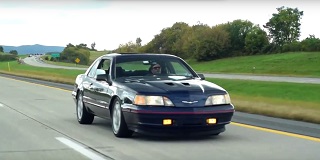
The Thunderbird (sometimes jokingly referred to as “the Thunderchicken”) had the performance oriented Turbo Coupe which was certainly a lot more amusing. Unlike the Monte Carlo, the interior was aimed towards performance and even included a *gasp* manual transmission and fancy, multi-adjustable seats that were stolen from the Mustang GT. The downside to the T-Bird was that it was a heavy car and given the engine management of that time period, unless the engine was on full boil, driving a Turbo Coupe was more like driving a 4-cylinder Ford Ranger – the vehicle that donated it’s 2.3L for the base of the turbo motor (and in later years the EcoBoost Mustangs and Focus RS).
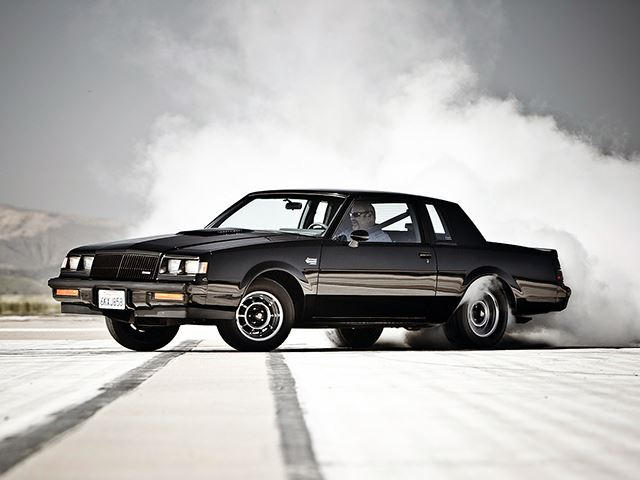
Lastly are the Grand National and GNX – the Grand National, unlike the Monte Carlo, offered a drivetrain that was anything but mundane. Even the interior was more fanciful than the basic Regal which was the Country Club variant of the Monte Carlo. The suspension was tweaked a bit on the Grand National to make it less boat-like but the car is still a unibody luxo-cruiser. The GNX is the same thing but with more power and more suspension tweaks which made it actually drive reasonably well for the time period. Don’t confuse the Grand National and the GNX though – they look similar and have the same parentage but the Grand National is the car you could take home to Mother while the GNX was the dirty little secret you enjoyed around the corner.
> and now, back to you in the studio, Brad <
Brad N: Okay guys, I see your points, but I still think you are generalizing all US made cars into one totally shitty bucket compared to the rest. Even though the 5.0L and 5.7L engines of those eras were anemic in stock trim, you can’t argue with their tunability and reputation at the dragstrip. There is a reason that people are still swapping Ford 5.0L and Chevy 5.7L motors into everything, from luxury Jaguars and Land Rovers to your beloved german sports cars like Porsches and BMWs. Matt Y himself had a “Jag that runs” with a swapped 5.7L. #lsswapallthethings.
As referenced above, there was an oil crisis in the ‘70’s that essentially drove the American automakers to make drastic changes to their cars. If the U.S. government would have allowed them to make 500HP fire-breathing V8s that went 0-100mph in 5 seconds and got 5 mpg, they certainly would have. But instead, they neutered their offerings but allowed for a substantial aftermarket industry to essentially make up the difference and give the cars “muscle” again. And regarding the Grand National and GNX, with a turbo 3.8L V6, it may have only produced 200-245 HP (depending on year), that was just a knob turn away from doubling that output (albeit, probably not reliably).
As was stated earlier, by today’s standards, cars of the ‘80’s are terrible… All of them, zero exceptions, they are horrible examples compared to any of today’s offerings.
However, nostalgia is very real in car culture and we love these “pieces of crap” unconditionally. I would love to have an old square body Silverado and box Chevy Caprice Classic sitting in my driveway for no other reason than the fact that my family had them when I was growing up. I spent my childhood riding in the back seat (without a seat belt or car seat) jumping around wrestling with my brother on the way to the beach… 🙂 #goodtimes.
We can only hope that the next generation will look back on the cars of this era with the same affection. #reflections.






